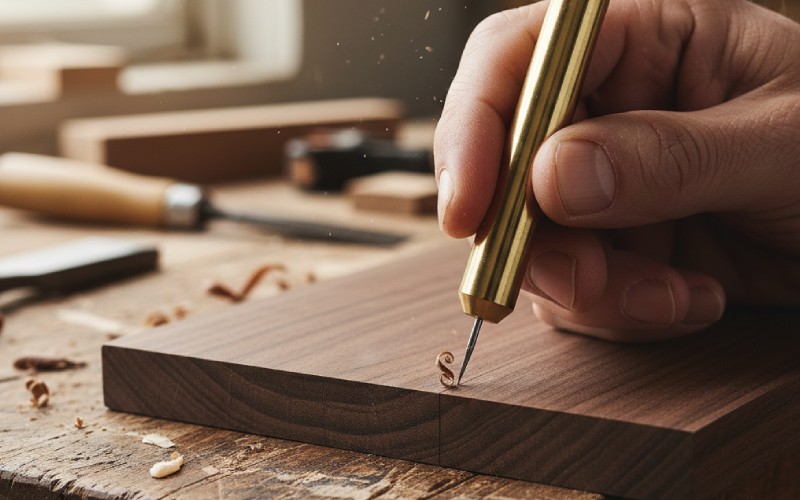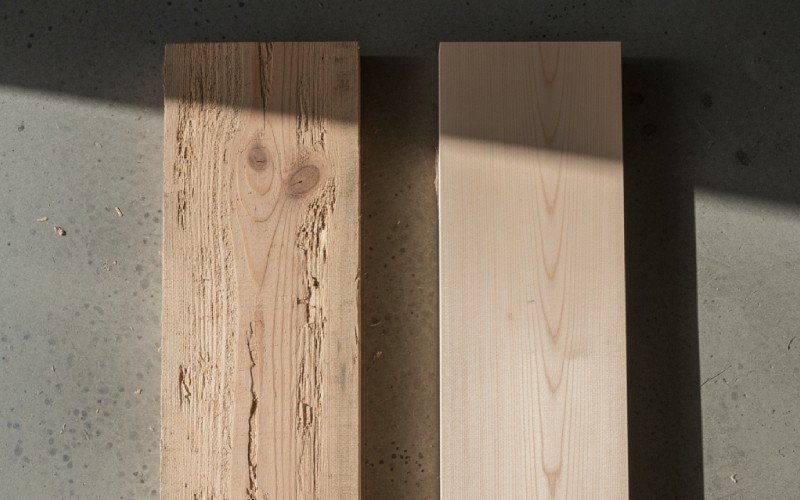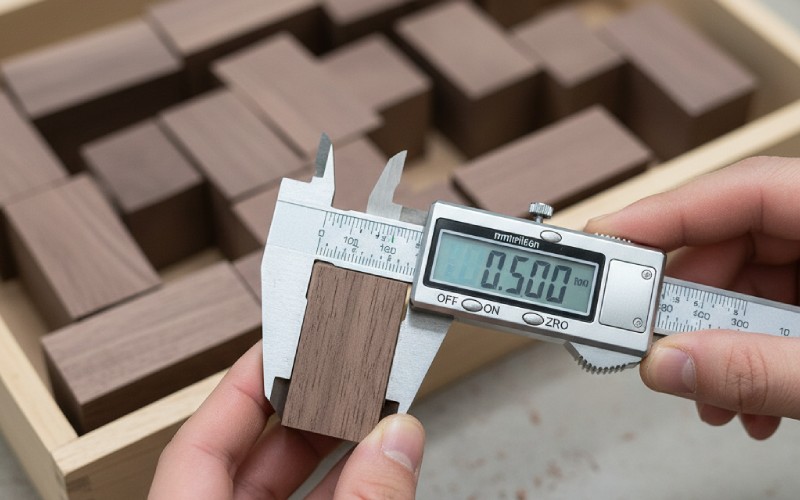Let Istar help you get started on your project with our experience and know-how!
Upload your design files and production requirements and we will get back to you within 30 minutes!

Have you ever bought a piece of wood, like a 2×4, and saw that it was not really 2 inches by 4 inches? This can be very confusing. You might think your tape measure is broken. Or you might think you bought the wrong thing. The truth is, you have found the difference between different kinds of dimensions. This article will make it all very easy to understand. We will look at what nominal, target, and mean target dimensions are. Knowing this will help you. You will be able to plan your projects better and buy the right stuff. You will also understand why things are the size they are. This information is very important for anyone who builds, makes, or designs things.
It is best to think of a nominal dimension as just a name. The word “nominal” has a meaning of “in name only.” It is a label for materials that come in standard sizes. The most common example is a piece of lumber. We call a certain piece of wood a “2×4.” That is its nominal dimension. It tells you the rough size. It also tells you what group it belongs to. It is a simple way to talk about a standard piece of material.
When you go to the store, you ask for a “2×4.” You do not ask for a 1.5-inch by 3.5-inch piece of wood. You do this even though that is the real size. The nominal name is used to make things easy. It is much easier to remember and say “2×4.” This nominal label gives you a starting point. You know about what size you are getting. The meaning of this dimension is for naming things, not for an exact measurement.
You can think of it like sizes for clothes. You might buy a shirt that is a size “Large.” That is its nominal size. But a “Large” shirt from one store might be a little different in size from a “Large” at another store. The nominal dimension gives you a good idea of the size. But it is not the exact, perfect measurement of the final piece. The nominal size is almost always bigger than the real, finished size.
This is a very good question. The reason a piece of wood isn’t its nominal size is because of the way it is made. When a tree is first cut down, it is cut into large, rough pieces. A piece of lumber that will later become a 2×4 might start out very close to 2 inches by 4 inches. This rough cut is where the nominal dimension comes from. It is the size of the fresh, wet, and unfinished piece of wood.
But the wood is not ready to use yet. First, the wood must be dried. Wood shrinks a lot when it dries. So, right away, our piece of wood gets a little smaller. After it is dry, the wood is still rough. It needs to be made smooth on all four sides. This makes it ready for building. This is done with a machine called a planer. The planer shaves off a small bit of wood from each side to make it flat and smooth.
This planning step takes away even more wood. After drying and planning, the final size of our 2×4 piece of wood is now about 1.5 inches by 3.5 inches. So, the difference between the nominal size and the real size comes from the work needed to get the wood ready to be used. The nominal dimension is the starting point, not the ending point.

The target dimension is the exact size you want a finished piece to be. It is your main goal. For example, if you are building a bookshelf and your plan says a shelf should be 12 inches deep, then 12 inches is your target dimension. This is the number you try to get when you measure and cut your material. It is the best, perfect measurement for that one piece.
A nominal dimension is a general name. But a target dimension is very exact. It is often written with decimal points, like 12.00 inches or 3.50 inches. This is to show that it is meant to be very exact. In drawings, plans, and blueprints, the numbers you see are almost always target dimensions. They tell the builder or the person running a machine the exact size to make something.
The target dimension is what you set on your saw or your other tools. If you need to cut a piece of wood to be 36 inches long, you measure and mark 36 inches on the wood. That is your target. After you are done with the cut, you hope the piece measures exactly 36 inches. The meaning of the target dimension is simple. It is “this is the perfect size we are trying to get.”
You can find the target dimension in your project plans. Someone, like an engineer or a designer, has already figured out the perfect size for each part. They make this decision based on how the parts need to fit together. They also think about what the thing you are making is supposed to do. The target dimension makes sure that everything will fit together the right way. For a house, the target dimension for a wall stud is very important so that the walls will be straight.
Once you know the target dimension, you can use it to set up your tools. As an example, you might move the guide on a table saw to a certain measurement. When you push your piece of wood through the saw, it will be cut to that size. This makes the target dimension a very important guide. It is the instruction you follow to get the right final size.
Setting a target dimension is all about planning ahead. You should decide on the final size before you start to cut. This helps stop you from wasting material and from making mistakes. If you cut a piece too short, you often cannot fix it. By setting a clear target dimension, you give yourself a clear goal for each piece you need to make.
The mean target dimension may sound hard, but it is just an average. The word “mean” is another word for average. This dimension is used when you are making many pieces that are all the same. Let’s say you have a job to cut 100 blocks of wood that are all the same. Your target dimension for the length of each block is 4.0 inches. You set up your saw and cut all 100 blocks.
Even if your setup is perfect, no two pieces will be exactly the same. Your saw might shake a little. The wood might move a little. Or the saw blade might be a little bit worn. Some pieces might be 4.01 inches long. Some might be 3.99 inches long. Most of the pieces will be very, very close to 4.0 inches, but not perfect.
To find the mean target dimension, you would measure all 100 pieces you cut. Then, you add all of those measurements together. After that, you divide the total by 100. The number you get is the average size you really made. This is your mean target dimension. If your mean target dimension is 4.01 inches, it tells you that, on average, your cuts are a little bit too long. The meaning of this dimension is to check how good and how correct your work is.
The mean target dimension is very important for making sure everything is made well. It tells you how well your way of working is going. Let’s go back to our example of cutting 100 blocks of wood. Our target dimension was 4.0 inches. After we cut all the pieces and do the measurement, we find that our mean target dimension is 4.05 inches. This is a problem. It means our setup is making pieces that are too long over and over again.
This measurement tells us we need to change our machine. Maybe the guide on our saw slipped a little bit. By knowing the mean target dimension, we can fix the problem. We can change the saw in the other direction. This will get our average size closer to the 4.0-inch target. Without this number, we would just keep making parts that are the wrong size.
This idea is very important in factories that make thousands of parts. They are always checking the mean target dimension. They do this to make sure their machines are working the right way. If the mean target dimension starts to get far away from the target dimension, they know it is time to fix or change something. It is a great way to make sure every piece is as close to perfect as it can be.
Seeing these three kinds of dimensions next to each other can make their meaning and use much clearer. The table below explains the main points for each one.
| Feature | Nominal Dimension | Target Dimension | Mean Target Dimension |
|---|---|---|---|
| What It Is | A name or a label | The perfect, best size | The average size of pieces you made |
| Purpose | For easy naming | A goal for your work | To check if your work is good and correct |
| Example | A “2×4” piece of wood | Cut a board to 36.5 inches | 100 boards have an average of 36.52 inches |
| Where It’s Used | Talking about raw materials | Blueprints, plans, and designs | Checking work in factories |
No, not every project or piece will use all three types of dimensions. It is based on what you are doing. If you are someone who builds for fun and are making a single birdhouse, you will mostly work with two. You will buy a piece of lumber using its nominal dimension (like a “1×6”). Then, you will use your project plans to cut it to an exact target dimension (like 8 inches long). You probably will not make enough pieces to need to figure out a mean target dimension.
The nominal dimension is most common for raw materials. These materials come in standard sizes, like wood, pipe, and some kinds of metal. The target dimension is used in almost every project where you make something. Any time you measure and cut, you are working to get to a target dimension.
The mean target dimension is mostly used in factories. It is for making many parts that are the same. When you need to make sure hundreds or thousands of parts are all very close to the same size, the mean target dimension is a big help. It is a tool for professionals to make sure their work is high quality again and again.
Knowing about the different dimension types makes you a better builder. First, it helps you buy the right materials. When you know a nominal 2×4 is really 1.5 by 3.5 inches, you can plan your project using the actual size. You will not be surprised when the pieces are smaller than their name says they are. This saves you from making mistakes in your plans.
Second, it helps you be more exact. By paying attention to the target dimension from your plans, you know exactly what size to aim for. You will learn to measure carefully. You will also learn to set up your tools to hit that target. This makes parts that fit together better. It also makes your final project look great.
Finally, if you ever do make many copies of a piece, you can use the idea of a mean target dimension. You can measure a few of your first pieces. This will let you see if your setup is correct. If your first three pieces are all a little long, you can change your saw before you cut the rest. This simple check can save you a lot of time and wood.

Let’s see how a single piece of wood becomes part of a table leg. This will show how all the dimensions work with each other.